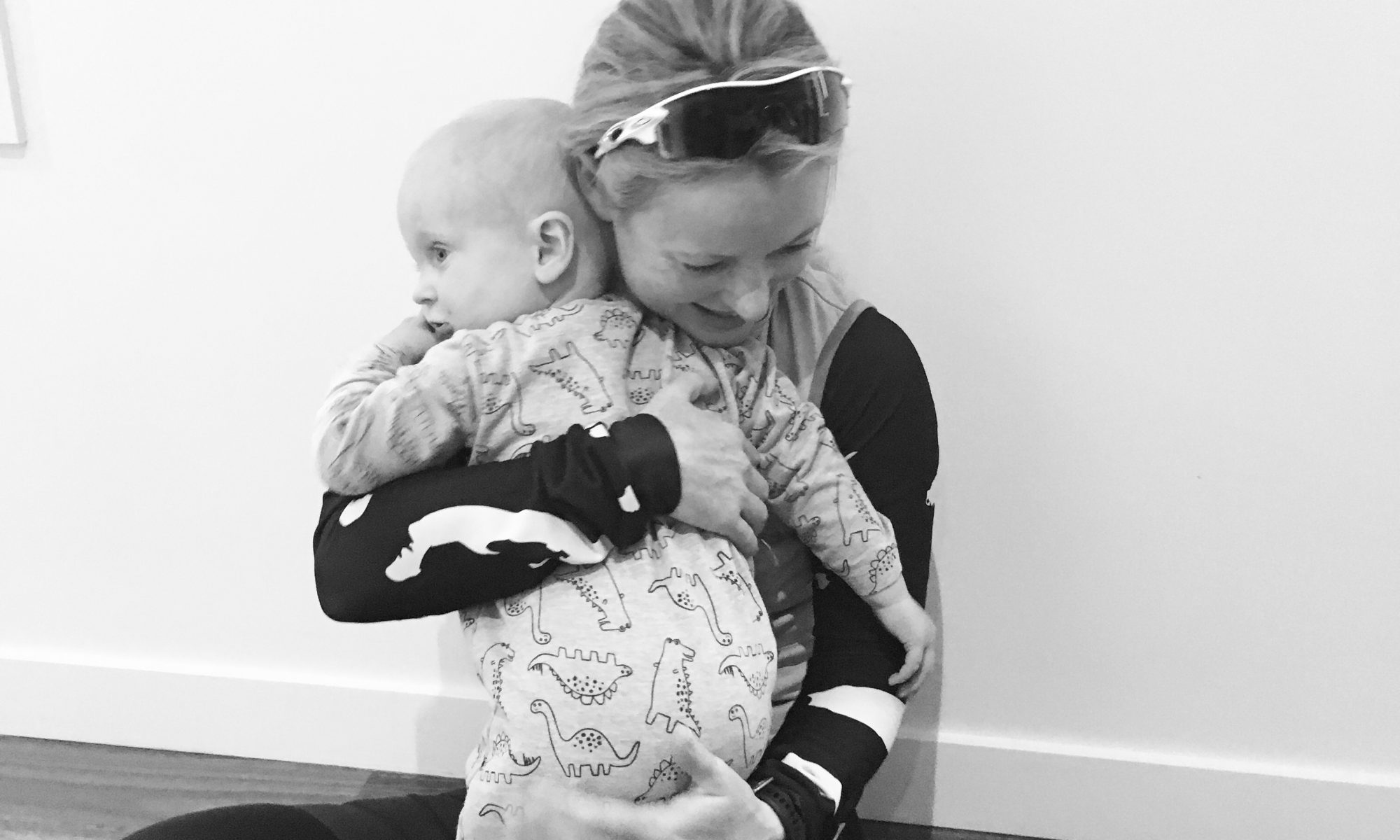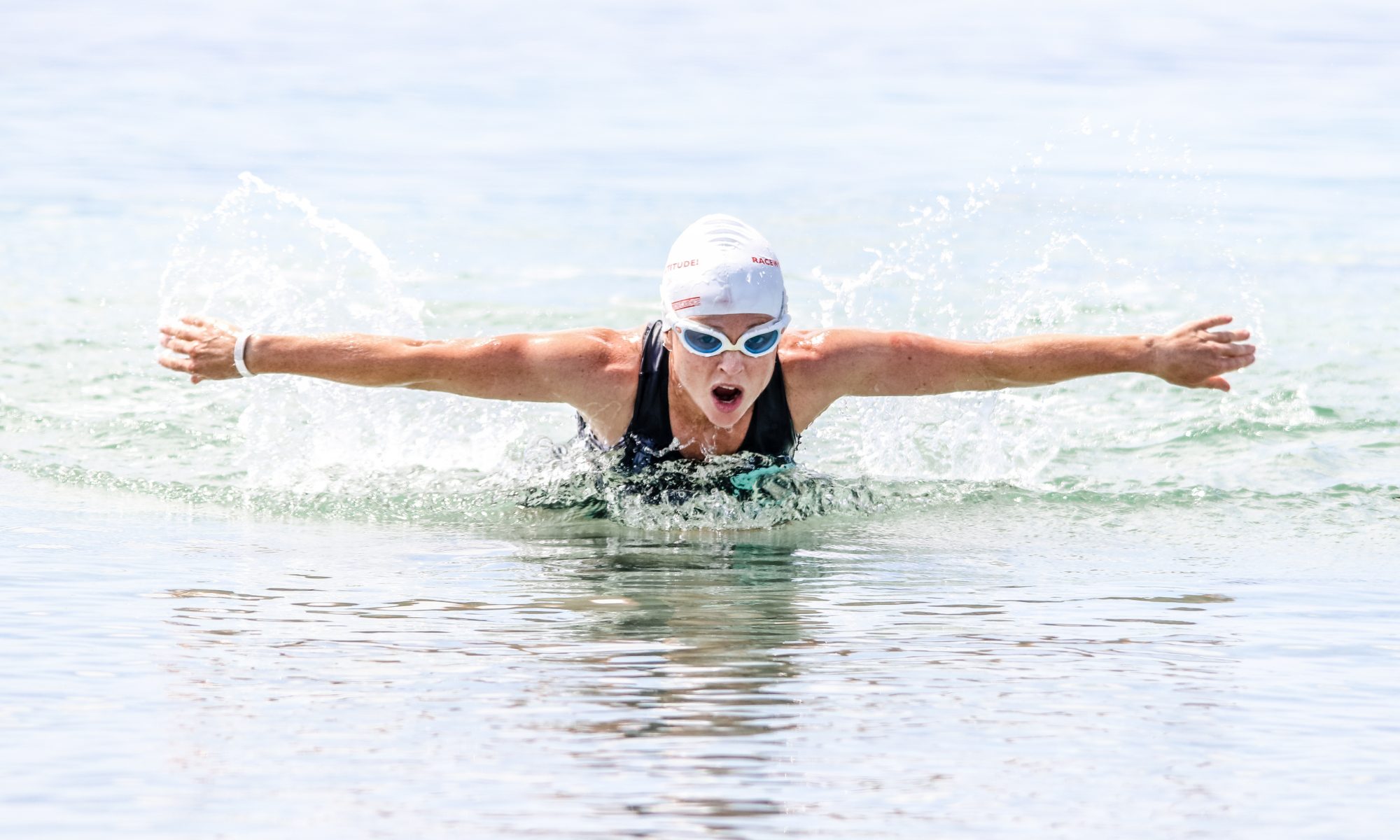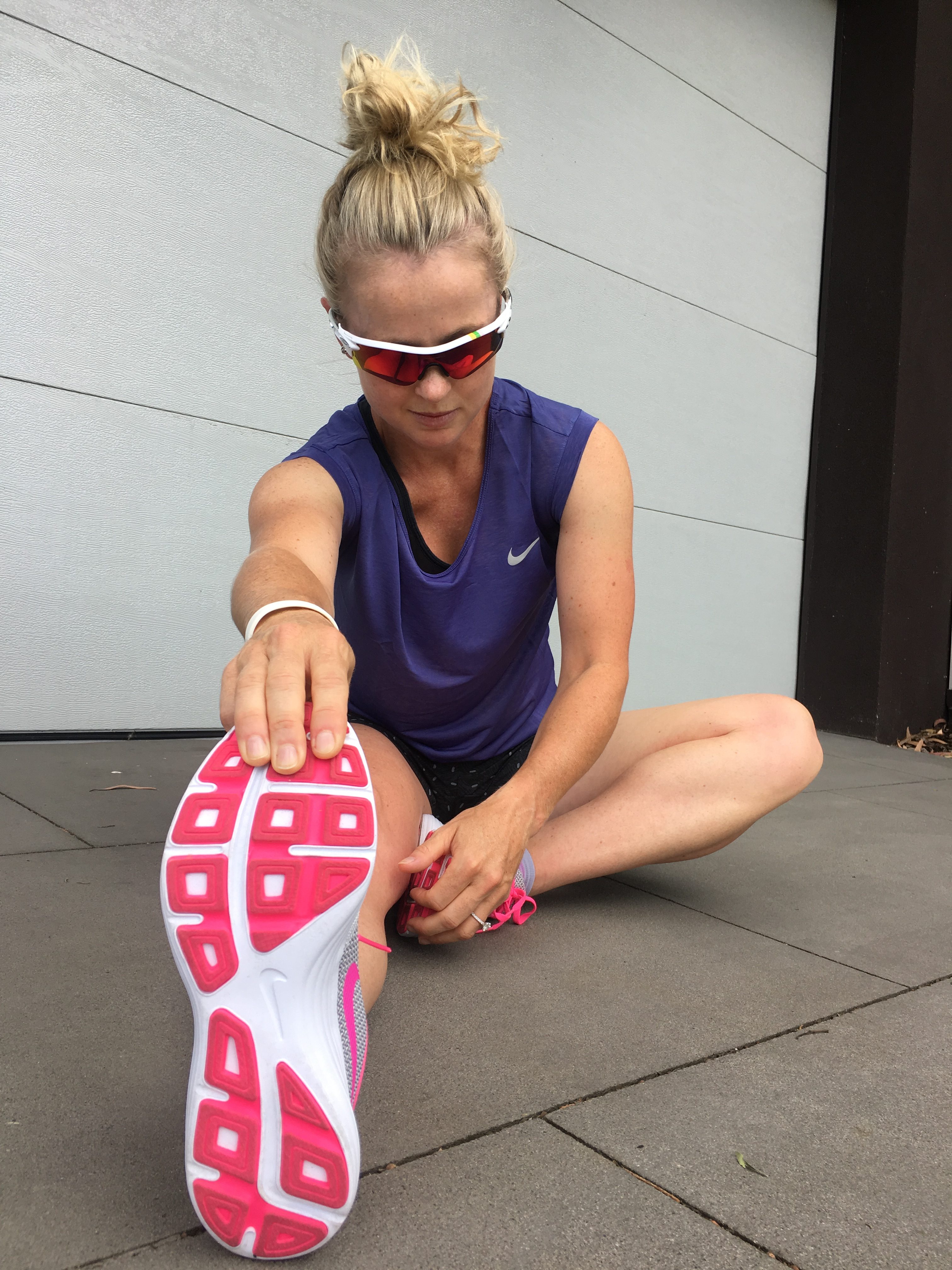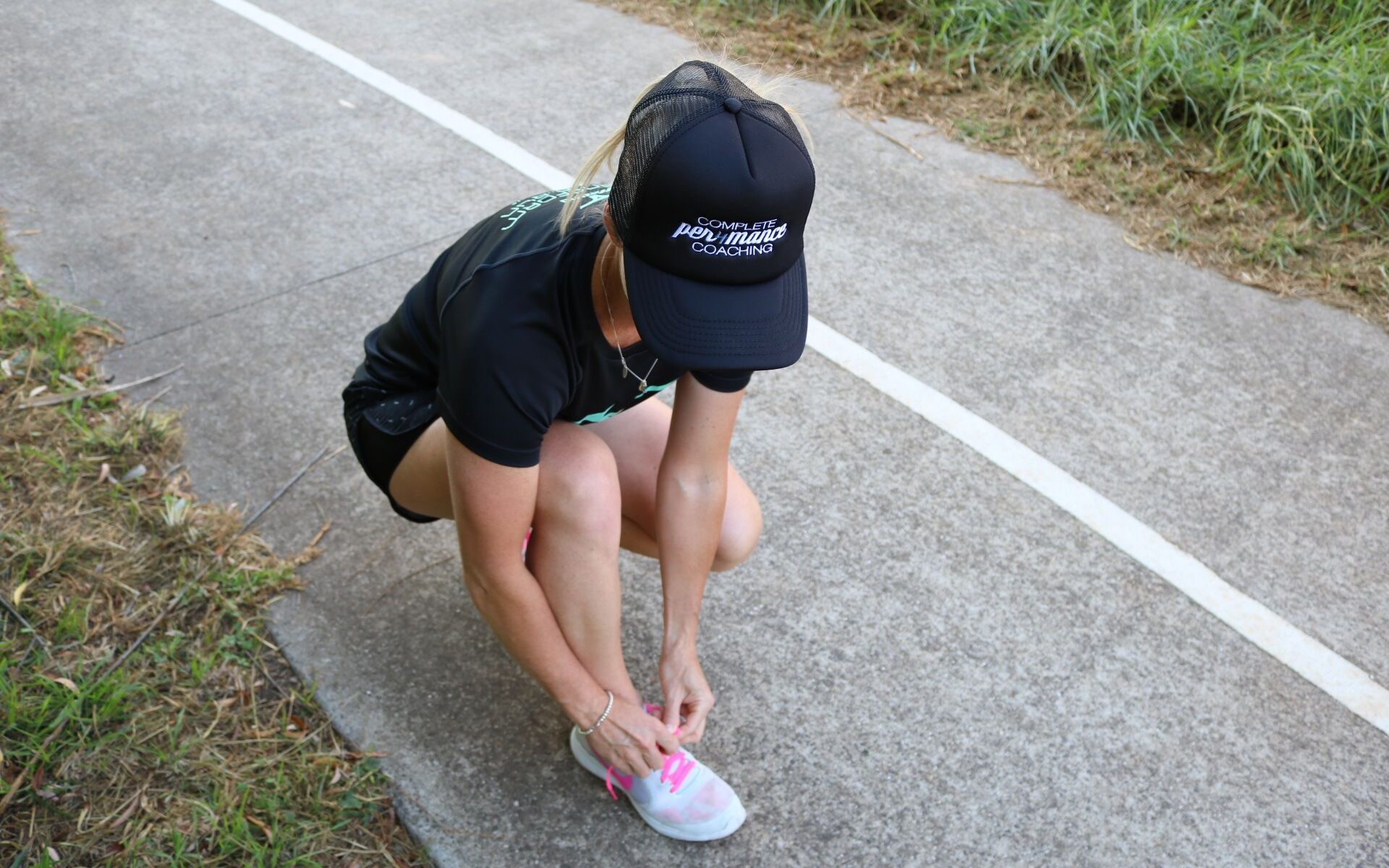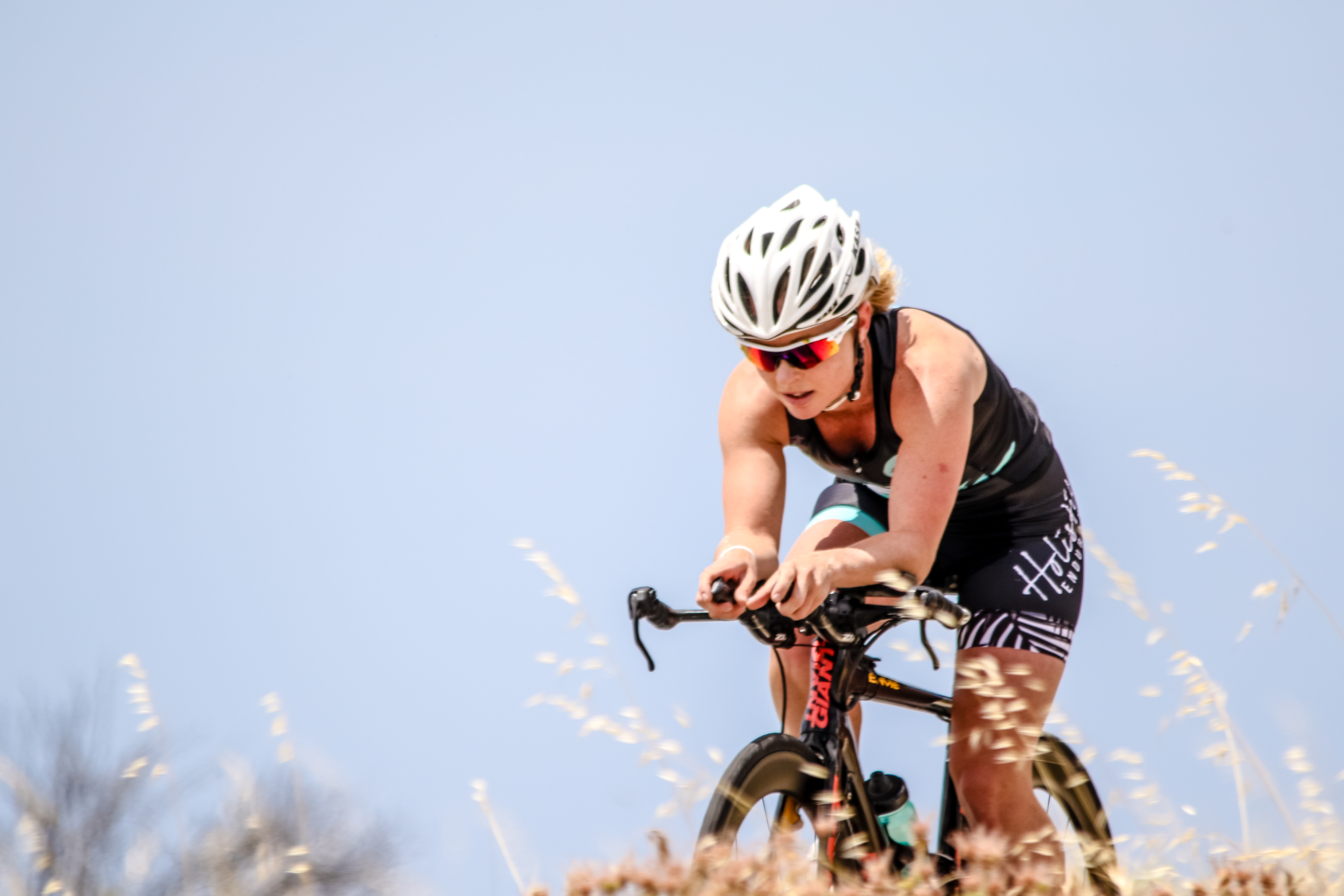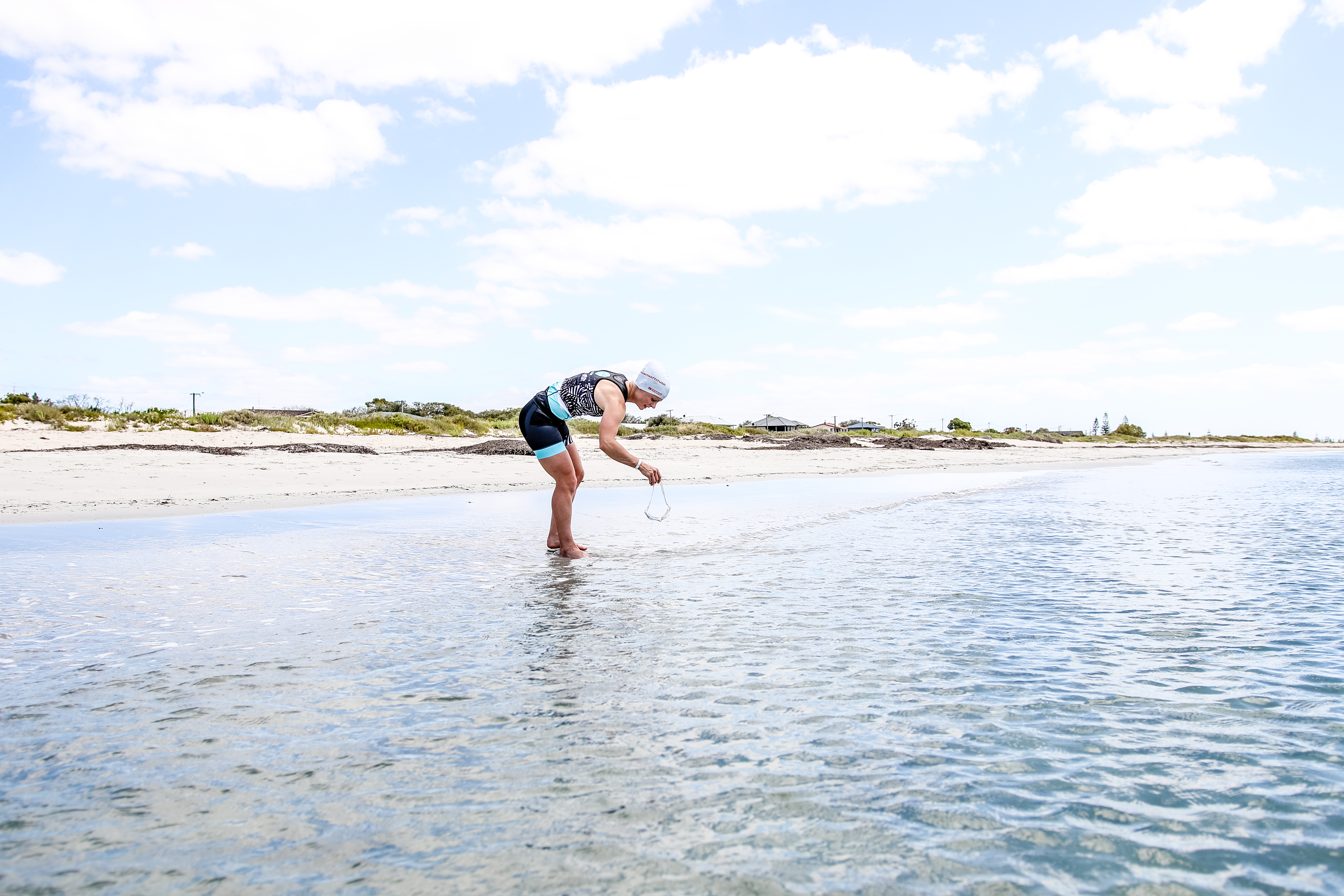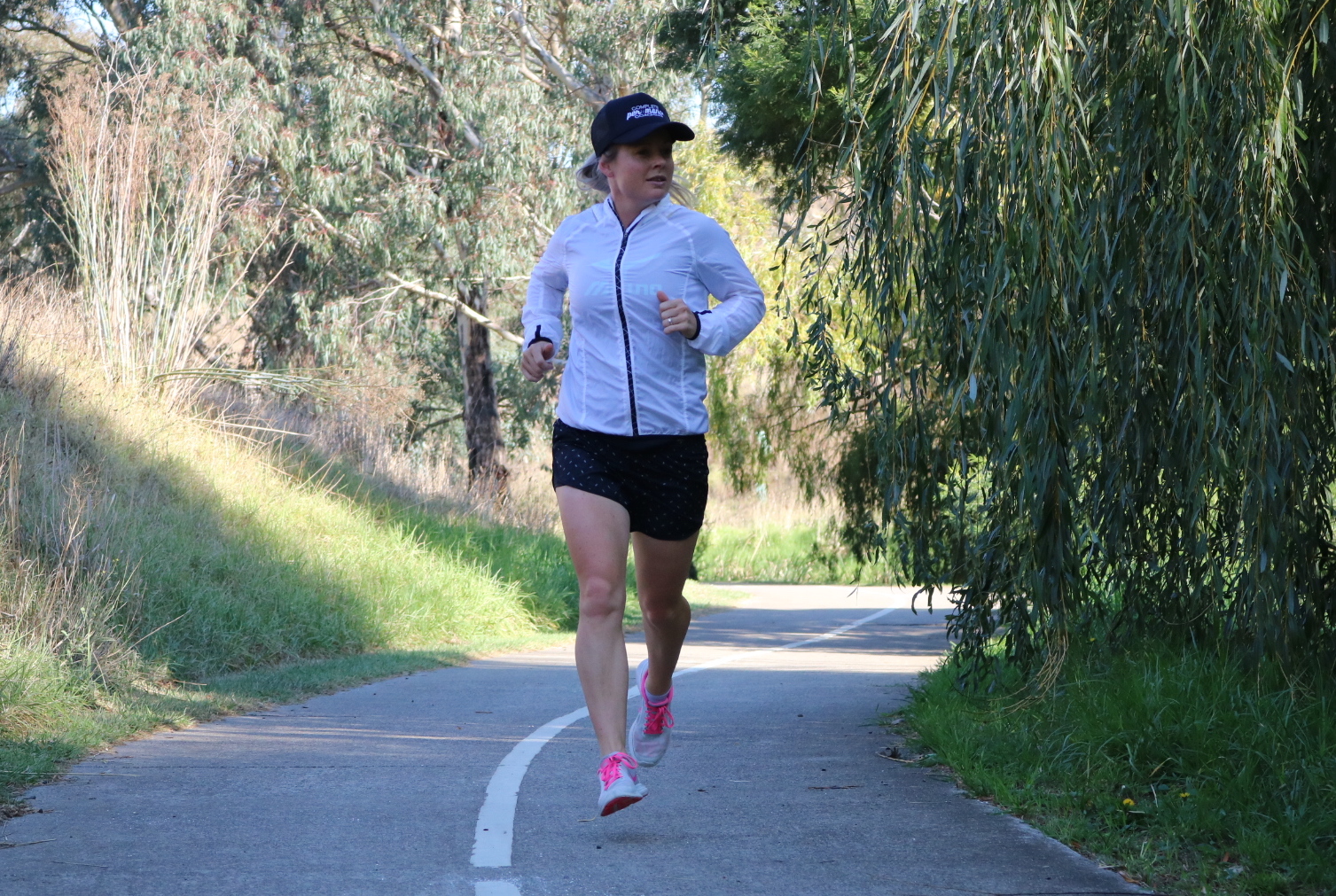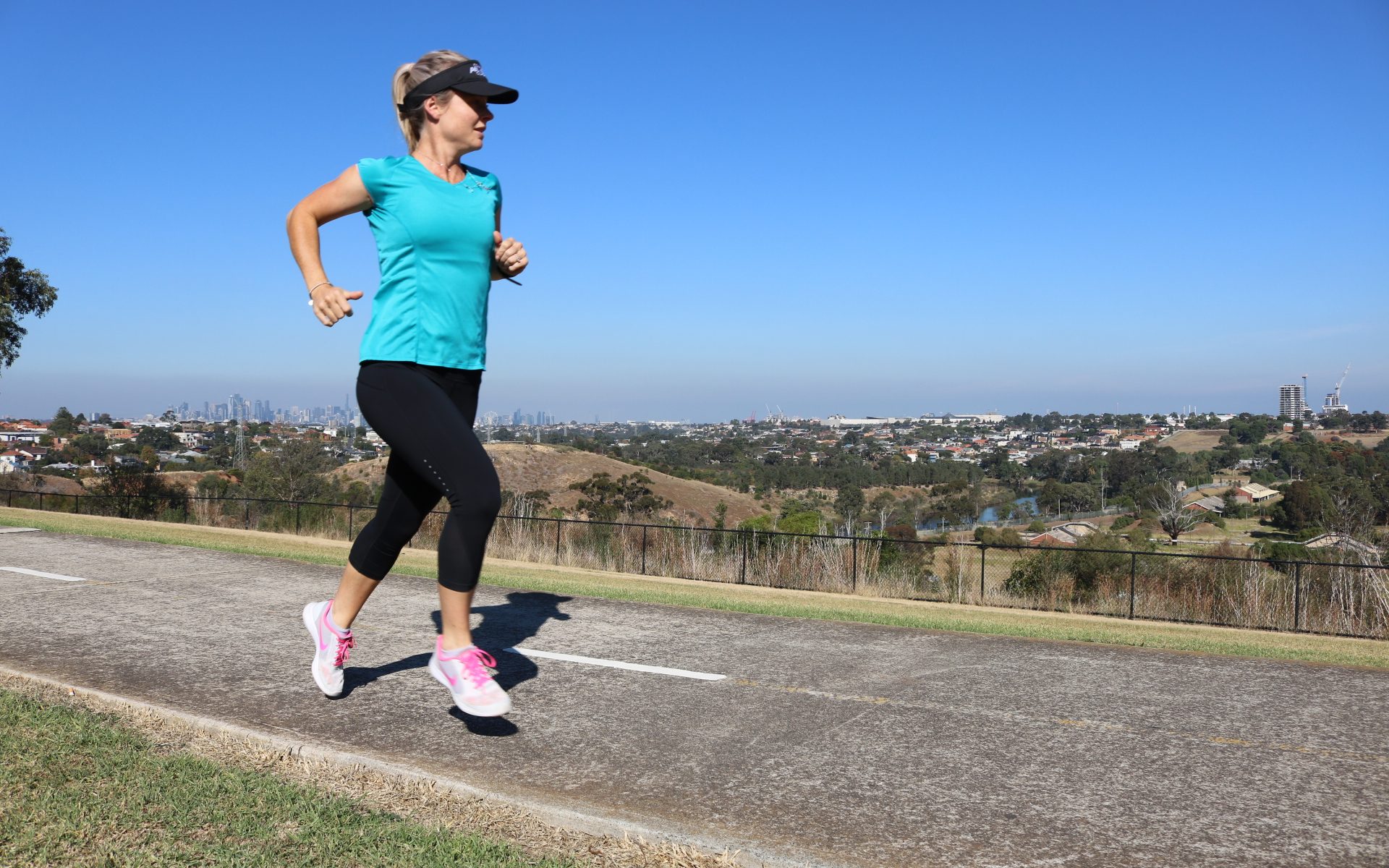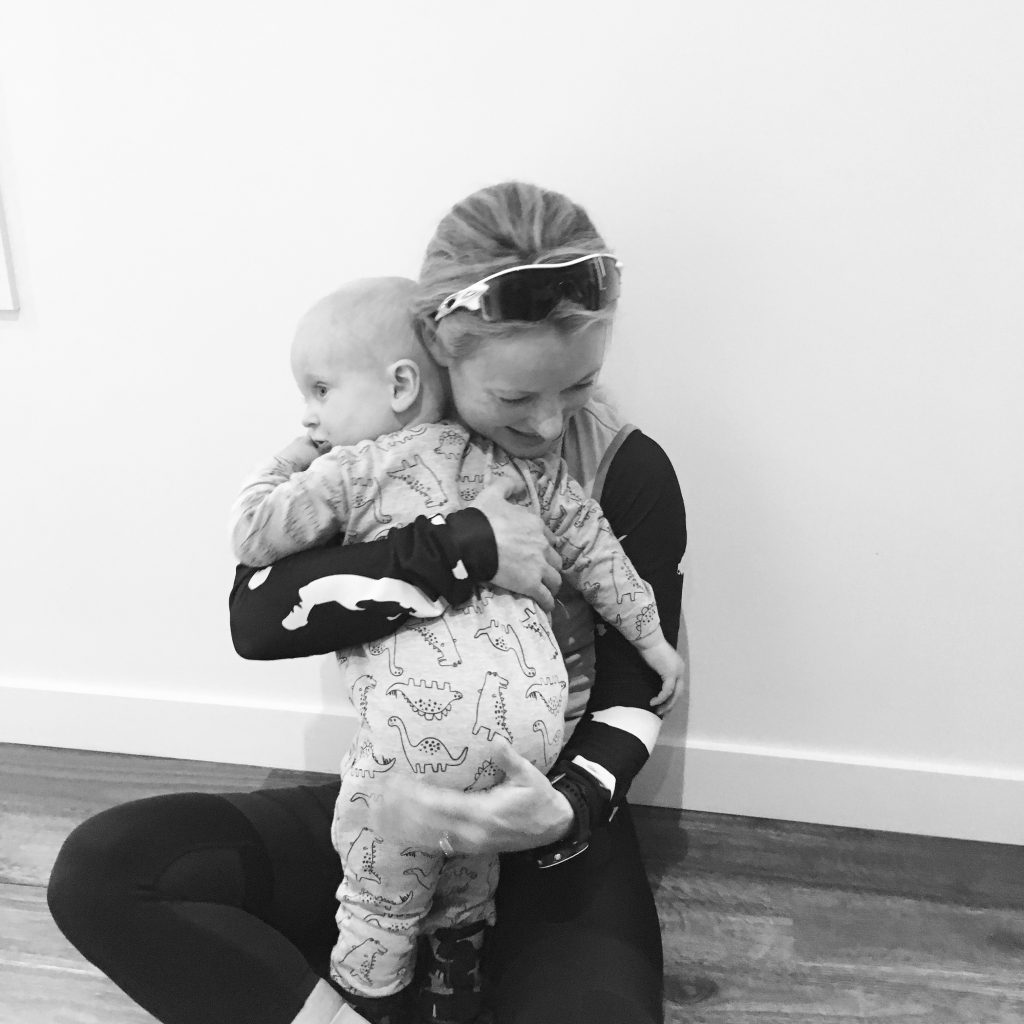
Wow. It is hard to look back and believe how much my life, work and training has changed in the past 2.5years. Rewind to December 2016 (yes that seems AGES ago!) and I was standing on the podium of a Half Ironman. Then, just a few short months later I learnt I was expecting my first child. For someone who has always been very personally driven, fiercely independent, loved the flexibility to train as long as I liked, work as much as needed and sleep in whenever I chose to, I knew this was going to be a big adjustment. And adjustment it was! You can read about how I first managed this here.
Press the fast forward button and all of a sudden I have 2 children under two, I am now married (yes we managed to do this between #1 and #2), am also running my own coaching business, AND back into training myself. Phew, even I feel exhausted just writing that!
‘Ohhh 2 children under 2 – you will have your hands full!’ so many people would say to me when they found out about #2. And yep, they were right. But for me, it feels like just the right amount of full – you get very handy at wrangling a toddler in one arm, while carrying a newborn in the other. 😉
BUT – what does ‘life’ REALLY look like? It’s easy to share a glimpse of it on social media – the cute pics and vids of kids doing gorgeous and hilarious things, the snapshots that we choose to share, but as we all know, social media only shows a very small portion of what our day to day lives REALLY look like. Not the nitty gritty, the juggling act, the broken sleep, the tag teaming, or the days of exhaustion but at the same time the sense of accomplishment. You soon learn where your best windows are for working, training, resting and sleeping, and get good at having patience in getting out the door, in taking each day as it comes, and knowing that your well laid out plans may just go out the window. But that you wouldn’t change it for the world. 🙂
So this is what I wanted to share – more than just the snapshots and cute pictures,. Not to say ‘go me’, but more to say – go mums! I didn’t know many young triathlete mums before I was one myself, apart from a select few, it was like mums took a good 3-5years away from triathlon as they raised a young family, and it wasn’t until say kindergarten or school age that they thought about returning to the sport.
So now being a triathlete and a working mum myself, I have other mothers asking me how I fit everything in, how I manage to have the motivation to get up and train, to head out the door on less than optimal sleep. And even WHY?! Some people seem in awe, others look on questioning… But I wanted to share the journey to show that yeah – it is tough, and it does require a lot of juggling, but if you want it to work, you CAN make it work.
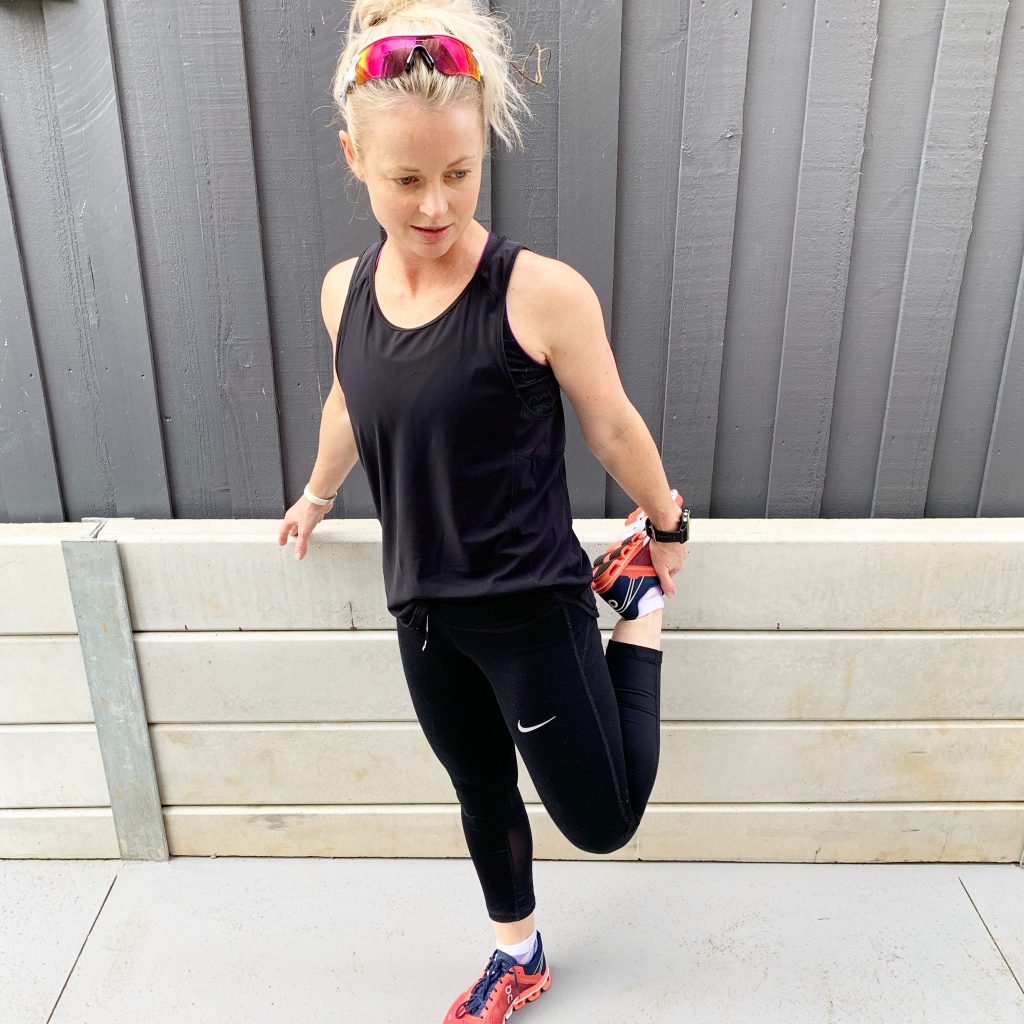
My first ride back:
My first ride back on the road post #2 (Edie) was certainly a mission to say the least. Long gone are the days of simply setting the alarm and waking when it goes off, it now requires military precision. As they say ‘where there’s a will there’s a way!‘ Soooo. To get myself out the door for my first road ride 2 months post-partum, this is what it took:
10pm last night feed + express extra milk for the morning 🥛
10:40pm in bed asleep
3.30am bubs wakes for a feed
4.15am back into bed
5.30am alarm goes off, get myself dressed/ready
5.45am express extra milk for hubby
6.15am wake up bubs for a quick feed
6.30am bike in the car and drive to meet others
6.55am finally on the bike! 😁🙌🏻 (and it rained on us mind you, but I did not care one bit!)
So despite having broken sleep, despite having to get up in the middle of the night to feed, despite the logistics of having to express – all this just to get out on the road, I still view this as totally worth it! And worth it is was! Especially after being ‘confined’ to an indoor trainer for the past ~6months leading into her birth and recovering post.
SO – if you feel it’s worth it, then know that it IS possible. It may not be easy, and you may spend more time prepping than actually training, but if you have a goal, if it’s something you really want to do – for you! then do it – only you can put a value on what it means to you. What kept me going in the early days was reminding myself that it won’t always be like this, it won’t always be so time consuming. And it’s not. It does get easier.
As bubs grows and settle into their routines, you will claw back some of your time (and sleep!) and heading out the door wont feel like as much as a mission as it is in the beginning – you get better at the juggling act!
What my work / life / family dynamic looks like
What ones family dynamics looks like plays a BIG part in how you will manage your work, training (and sanity!) 😉 And keep in mind that everyone’s child/children are different. And each individual child of yours may also be different too. I can already see differences in my little ones already. They both have similar relaxed natures, my eldest inquisitive, yet slightly cautious, adventurous, but mostly knows his boundaries, he doesn’t like things out of place, has little patience, but at the same time is a determined little soul with the biggest sweetest and kindest heart and LOVES being outdoors. My youngest is already showing signs of being chilled and observant, patient and relaxed, and luckily for me (us) they were (are) both very good sleepers from the onset. Once they grew past the ‘newborn’ stage ~around 4mths, they learnt to (mostly) sleep through the night. So apart from developmental stages/ages where everything (literally!) goes out the window, I honestly couldn’t ask for better little people to fill our spaces. 🙂
BUT – if this is not you, know I hear you and I feel you. I know what sleep deprivation looks and feels like – we all go through it in the early stages, BUT turning that into months (and for some years!) is tough for anyone to manage and work around, so know your means and know your boundaries based on your own circumstances. Don’t put too much pressure on yourself if you / your bubs and your family are just not quite there yet.
Everyone’s personal situations will also be different. In our household, hubby works full time, I work part time from home and at the same time we are also both athletes training for our own individual sports and our own individual goals. I have my youngest Edie at home with me full time while working around her, and our little man Mills spends 2 days in day care and a day with his Pa. This gives me just enough relief to knuckle down with work while Edie is content or asleep.
But it is the training front that is actually the biggest juggle. Someone commented to me one day – ‘oh it must be easy being able to work from home and train when you want‘. Ummmm, no! (just a tip, never say to a working mum it must be easy, no matter the context – you will loose every time!) 😉
Early in the piece when bubs are newborns they sleep. alot. But they also feed. alot. Each of you are finding your feet and what routine works for you and your fam. When they sleep, you want to rest, or do the washing, or prep dinner….. It’s not like you have instant or infinite time to smack out a training session. Far from it. How many times I have thought – awesome, I’ve got an hour window to jump on the trainer while she’s asleep – and 15min into the session she wakes! But instead of getting frustrated, you just work around it. Sometimes your little ones need you more than other times. Just like work sometimes needs or asks more of you and you have to shift in that direction. I see motherhood as the same. It is and will be forever evolving, and will additionally change if you have outside help, if you are breast feeding, if you are working… there are so many variables.
So I just wanted to share that insight so you got a bit of a gauge of what our family dynamics looked like first – as mothers we are the first to compare ourselves to others. I didn’t write this for others to compare to, or to feel they have to strive for, but simply to document and share while hopefully allowing other (tri) athlete mums know that it is possible to raise a young family, to be a working mum while also training for triathlons (or what ever sport / activity / fitness you choose!) That yes – it is possible to put yourself first during times of the day / week and that you don’t have to feel guilty about that at all.
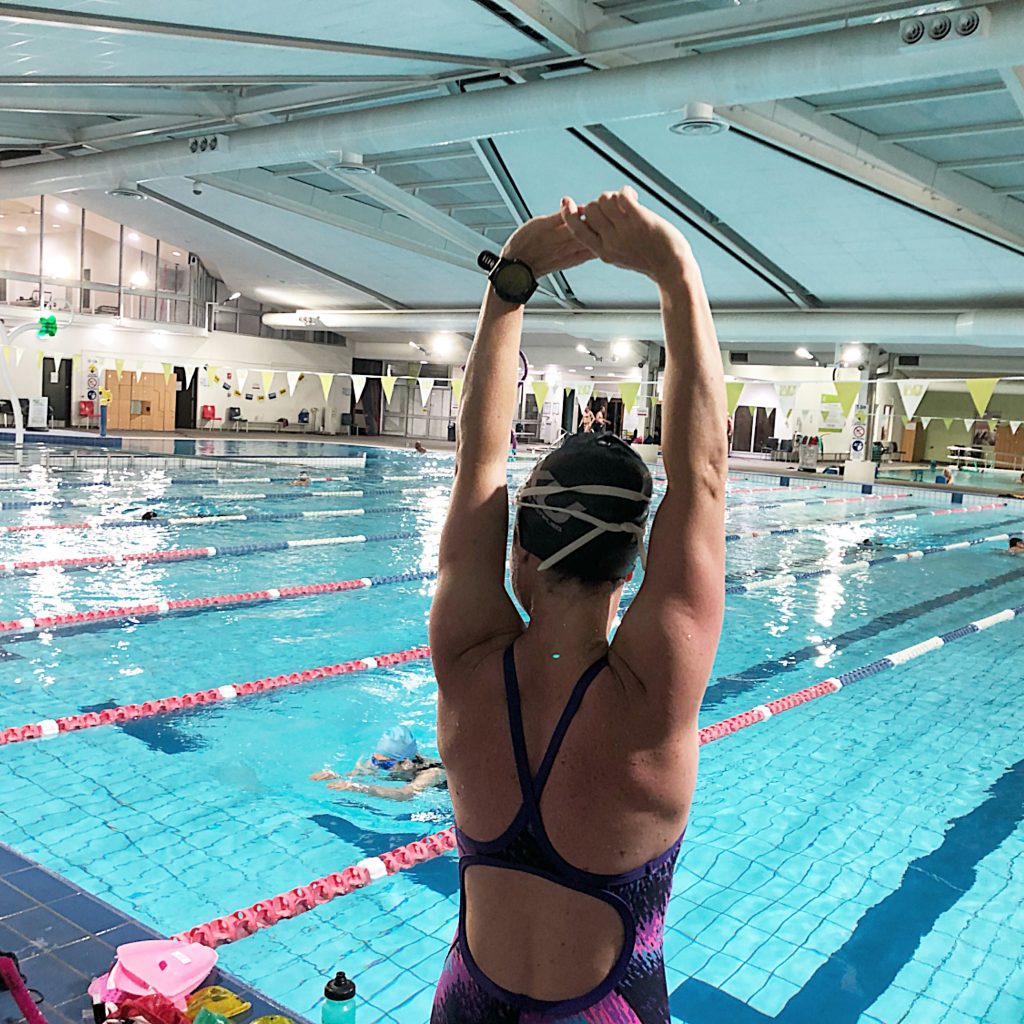
My working / training week
It’s certainly not perfect, and some days I can train more than others, and others I don’t get in what I had planned, but as a whole, we seem to have a pretty good balance and understanding of each others needs and what it takes to get everything done, while maintaining a happy family life. 🙂
A few people have asked whether I’m following a program. Apart from squad swimming where I have been joining Jamie Edwards and his crew from JET Coaching, no. I’m not following a program, and I train mainly solo. I have an idea in my head of what I want to achieve in a particular session / certain week, but I am flexible with it. This could mean that I may have a hill rep run planned but if my body is asking for a longer slower endurance run, then I’ll give it that. But I follow my own general coaching principles, methods and planning in my training. I’ve also been using myself as a bit of a guinea pig. I’ll test out a particular swim, bike and/or run set to see what it feels like, and use it with some of my athletes that I feel it can work for. So if you follow me on strava…. 😉
6 months post partum now, and for the last couple of months, this is what my ‘regular’ week can look like:
Monday’s and Wednesday mornings are my swim mornings – so swimming twice a week. These are probably the biggest challenges to get to at the moment. It means an early wake up to feed little miss, before I then get changed and head out the door to swim squad. Get on pool deck and do some mobility and activation work, before jumping in and then getting out to rush home to swap with hubby so he can get ready to head to work.
Should I be including an extra swim in- sure, I should/could/would, but right now, I find the balance of 2 swims enough, especially when sometimes two swims turns into only 1 swim for what ever reason. So two swims it is, and I’m just being realistic about my race goals around the swim based on how my swim progresses around this. But at the moment, after a few months back in the pool I’m just starting to feel swim fit again. Whoop!
Monday’s I will also try to include a strength and conditioning set at home during the day – mainly focused around functional movement, core stability etc, not heavy lifting, along with a walk to get the kids outside. And Wednesdays I attend a clinical pilates session after swimming. This has been fantastic returning post birth, but also a great way to learn how your body moves, it’s imbalances and working on correcting these. I highly recommend if you can fit into your training / week ! (Note this is FAR different to your standard group pilates classes)
Tuesdays have generally been brick days for me, a good way to get bang for your buck. Generally this will be in the afternoon when little miss is (hopefully) sleeping and I’ll time it for when hubby gets home to run off the bike OR I’ll run with her and the pram. 🙂 So a high intensity or strength based bike session, into an easy run off the bike. I might also include another short easy run first thing in the morning when hubby gets home from his ride and before he has to then head to work – if time / our schedules allow.
Thursdays for me have now moved into a double run day to up my run volume, but will shift back to a brick session day or separate bike and run sessions as the triathlon season comes closer. For me, I don’t run well in the mornings, I wake up stiff through my back so I find doing any quality of running in the morning tough. (Plus the winter mojo to run in the AM is severely lacking!) 😉 So instead, for these days I do an easy run loosener in the morning after hubby gets back from his morning ride, just running to feel, and then in the evening throwing in some quality such as hill strength/repeats or fartlek type session. (note this is generally my ONLY evening session) I’m not doing any speed / high intensity work in my runs at the moment, the volume seems to be working well and paces just gradually increasing based on my fitness gains from these, so I’m happy with my run progress after a slow and sluggish first few months. Patience here was definitely key!
Fridays I reserve as a ‘free’ day, or day of choice. If I feel like doing nothing, I don’t. If I feel like an easy spin, or a long walk, or some additional strength, I’ll do that. But I find it’s been great having a totally open day to do whatever I feel or whatever the day brings. Not to mention a sleep in! 😉
Weekends are where the juggle continues, with both myself and hubby working out plans on who’s riding when and where and with whom. It’s a compromise. And sucks if there is a day on the weekend when it’s terrible riding weather as it means one of us is spending time on the trainer! Given I do trainer work during the week, by the weekend I’m hanging to get on the road, so I can’t wait for more warmer and lighter days to come! So Saturdays I have generally been doing my long ride, and Sunday afternoons my long run. Long rides around ~2.5-3.5hours with slowly building run volume off the bike, and long runs now getting up around 1:15min. And each week just gradually building on the last and pulling back when I need the recovery.
When I’m training, I ensure I’m fully present. I’m focused, determined and driven to do that little bit better than last week. As you have now gathered, being a working triathlete and a mum, with a hubby who also trains, it really is a juggling act and you have to make the most of the time allowance you have. This often can mean he comes in from a session and I’m heading out for mine. A quick update on the kids as we pass each other. Some may wonder why we would choose to do this rather than just spending all our time with our little ones while they are so young, and all I can say is that we do it because we love it. It not only makes us feel good staying healthy and having goals to chase, we don’t think having kids should stop that. PLUS we can already see the influence this has on our eldest. He jumps on his bike inside all the time, he shows how he cleans it, will want to put his helmet on, even wants to put his water bottle on his bike – just to be like mum and dad. He hops on the floor and tries to do push ups, he ‘play’s with my roller, does squats and simply just loves being active with us. Children observe and learn so much, and without even teaching him, he’s understanding that being active is simply a part of life. And that there, makes my heart sing to know and see that – so why wouldn’t we want to train and chase after our our own goals?! Knowing that those traits are being learnt by the little people around us… 🙂

Things I have learnt being a working triathlete mum:
- Respect & appreciate your body,
You are not just relying on your body for your sport, your baby/ child/ children/ family is also relying on you. So if ever there was a time to listen to your body, and do whats right for you and your family – then its now. Don’t ignore any signs. - Being healthy is paramount,
Above all else, it is imperative to stay strong and healthy. I don’t believe any goal should override this and especially not when you are supporting a young bubs. So don’t cut corners on your health. - Consult / work with a professional,
Make sure you get the all clear from a womens health professional/specialist. Even though you may want to get back running asap, sometimes it may be advised against it based on your personal recovery. So listen to the professionals. They are there for you, so if it means walking for another couple of weeks. Then do it – there is plenty of time to get back to running! 🙂 - Communication is king
You need to have good communication. With your partner, with your coach / support team, with family… Whoever is on your ‘team’. Communicate frequently and communicate well. - Start sloooowwwwllly,
Slower than you thought was even possible. And above all else, listen to the advice from professionals. - Have patience,
For me it was 3 months of what felt like slow, heavy, awkward running before I even felt like I was running and not just plodding along. It took 3 months back in the pool after 2 years out of it to actually start to ‘feel’ the water again. It’s about having the patience to stick at it even though it’s hard and having the persistence (read stubbornness) to want to improve and be better than you were yesterday. - Sleep is key – get it when you can,
I feel very blessed. Both children learnt to sleep through the night quite early on. So from around 4mths they mostly slept through, this makes a MASSIVE difference. So if you have children that need you more at night time, keep in mind how this can impact your recovery and how your next sessions may feel. And if it means having a nap – or even just a lie down, during the day, then take it. You don’t have to be on the go all day every day. Give yourself permission to rest and recuperate – netflix is great for this just saying! 😉 - Don’t underestimate the toll breastfeeding takes on your body. Fuel for your bubs but also fuel for your training. And if you are unsure, seek further guidance. It can be a balancing act – especially around breastfeeding.
- You CAN find a way to make it happen,
If you want to do something, or have a goal that means something to you, then you will find a way to make it happen. I won’t say it will be easy, because its not, but there can always be a way. You just have to be willing. - Just as with anything in life, you learn,
You learn to be able to carry two squirming children at once. You learn how much is too much. You learn what your body is telling you…. And you will be forever learning – and I actually love that. 🙂 So don’t be so stuck and rigid (in your often old ways) that you loose the ability to learn. - Don’t feel you have to be super(hu)mum!
There’s the saying – you can do anything, but not everything. And this is so true! If the washing has to pile up for a couple of days, then so be it. If you have to get take out one night because you didn’t have time to go to the grocery store, it’s not the end of the world! You don’t have to be on top of everything all of the time. And that’s ok! - Online shopping will be your savour!
Speaking of grocery shopping, I can’t believe I never shopped online before children. What a time saver! If you don’t already, I highly recommend you start. I now shop for my ‘staples’ online, and then just walk to our local grocer / butcher / fish monger for fresh food with the kids in tow once a week. SO much easier! Plus I find saves money by planning ahead and not getting sucked into any unnecessary purchases. - Don’t be too hard on yourself.
If you have to miss a session because you are too tired as bubs was up more than normal the previous night, then do it, but don’t feel guilty about it. If you need to cut a session short as it’s all you had time for, then by all means cut it and again, don’t feel guilty. - Don’t put so much pressure on yourself,
Set a goal, but be flexible with it. Check in every couple of months to see how you are doing / progressing. Change things up if needed. But at the same time, know that you don’t have to be 100% fit or 100% ‘ready’ for a race to be able to do one. View your first race back as your first ever race! The excitement of simply being back out racing, no pressure and simply picture that finishing line with your little one waiting there for you, that will be your biggest achievement, not the time on the clock. 🙂 - Be flexible,
Some days / weeks you will feel like you are nailing it all, and others you will feel like you are just keeping your head above water. During these times you need to be flexible. Drop or switch out a session if you need to catch back up on sleep or simply to reset at home. We have a lot more variables in our lives now, that you need to be flexible, otherwise you will get to a point and you will feel like you are failing and not doing anything well. - Don’t compare yourself to ‘pre-baby/ies’
It can be easy to look back and think ‘I used to be able to do this’ or ‘I used to look like this’… but it serves no purpose. All you want to do is compare yourself today from yesterday. Not 3 years ago. Your life is vastly different now. There’s a new line in the sand. You have permission to set a new bench mark. Of course have goals, but know they don’t have to be compared to ‘before’ children. - Don’t be afraid to ask for help
As women – this can often be the hardest thing to do. And I find myself guilty of it too. We feel like we ‘should’ be able to do it all. And if we can’t we are failing (there’s that word again!) So reach out. You will be surprised how many people are willing to help if you just ask. And if someone asks – say yes! - I never said it would be easy….
It WILL be tough at times. There will be times you will feel like crying. There will be times you feel your partner doesn’t understand. There will be times when you feel in over your head. And that’s ok. Humans are emotional beings and feelings are what makes us human. So feel the emotions, acknowledge them, and then work with those around you to keep moving forward.

It’s a juggle – and at times often a struggle, I can’t deny that. Made even more challenging when your hubby is an athlete too, which means competing for training times and juggling these around children, work, daycare drop off and pick ups, feeding times, sleeping times and not to forget adult time!
But when my eldest yells with glee ‘mummy’s riding her bike!’, and waves with a big smile on his face as I head out the door, it truly melts my heart. It reminds me I’m not just doing this for me. But I’m doing this for them. Showing our two little ones that exercise is fun, and in our household, it is a part of who we are and what we do and with that, I can sleep well at night knowing that the example we are setting for the two most important humans in our lives is one we can be proud of. 🙂
Sarah xx
~ ~ ~~ ~ ~ ~~ ~ ~ ~ ~ ~ ~~ ~ ~ ~~ ~ ~ ~ ~ ~ ~~ ~ ~ ~~ ~ ~ ~ ~ ~ ~~ ~ ~ ~~ ~ ~ ~
Sarah is the Director & Head Coach at Complete Per4mance Coaching. Sarah qualified for the Ironman World Champs in her first Ironman attempt at Ironman Melbourne 2013 (also achieving a podium place in the same race), going on to compete in Kona that same year. Sarah shares her 10 years of coaching and racing experience, knowledge and education with athletes of all levels to help them achieve their optimal performance while maintaining a balanced, happy and healthy life.
Contact Sarah to discuss training options for you.



